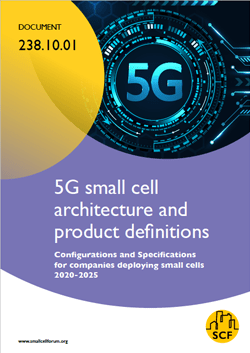What should a 5G small cell look like – and what does it need to do?
Why do we need definitions to inform the design of 5G small cells? Well, in the 5G era, small cells will be deployed in a far wider range of scenarios than in the past, and the form factors and architectures will be extremely varied.
The introduction of virtualized, disaggregated networks means that some small cells will consist of two or three elements, while others will still be all-in-one. Some form factors will be classed as ‘mini-macros’, which can be deployed unobtrusively on street furniture but have performance and power levels close to those of larger base stations. Others will be so tiny they can be embedded into pavements or consumer electronics.
And we shouldn’t be focused on form before function. Are we talking about outdoor or indoor small cells? Are they to service airports or factories?
It is clear, then, that old definitions are now inadequate, and there are real and present dangers of the industry fragmenting between hundreds of different designs that had insufficient common features to achieve any scale.
This is a major piece of work to provide a consensus view and concise definition of the types of 5G small cells and the key characteristics of the different types of commercially viable 5G small cell RAN products over the next five years. It is supported by a major survey of operators, other small cell deployers, and supply chain members.
Contents
Definition of 5G Small Cells and Small Cell Networks
5G Small Cell Deployment Scenarios
Small Cell Network Architecture and Product Types
Small Cell Power Considerations
5G-Small Cell Product Definitions
- Integrated Small Cell Configurations (Survey Results)
- Radio Unit (RU) for Disaggregated Networks (Survey Results)
- Distributed Unit (DU) for Disaggregated Networks (Survey Results)
- Analysis and Discussion of Configuration Results
Conclusions
5G small cell product definitions
Picocom’s Vicky Messer and AT&T’s Prabhakar Chitrapu, the SCF work item leads, provide an overview of this timely initiative.
This paper will support vendors and components makers, looking to prioritize their development efforts on the areas of highest demand; operators, to help as they make their architecture choices; and external stakeholders such as regulators.
Editors


Contributors






